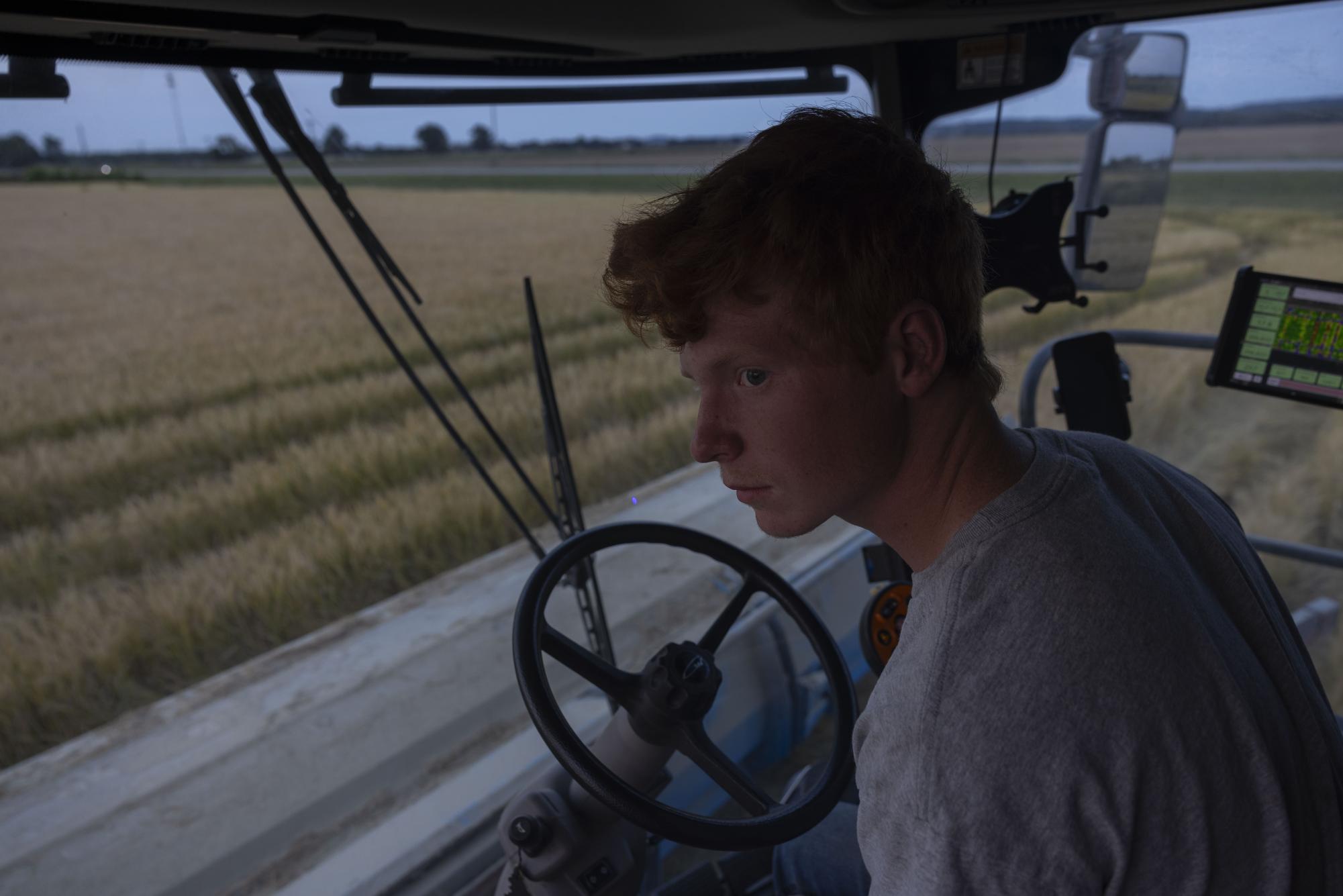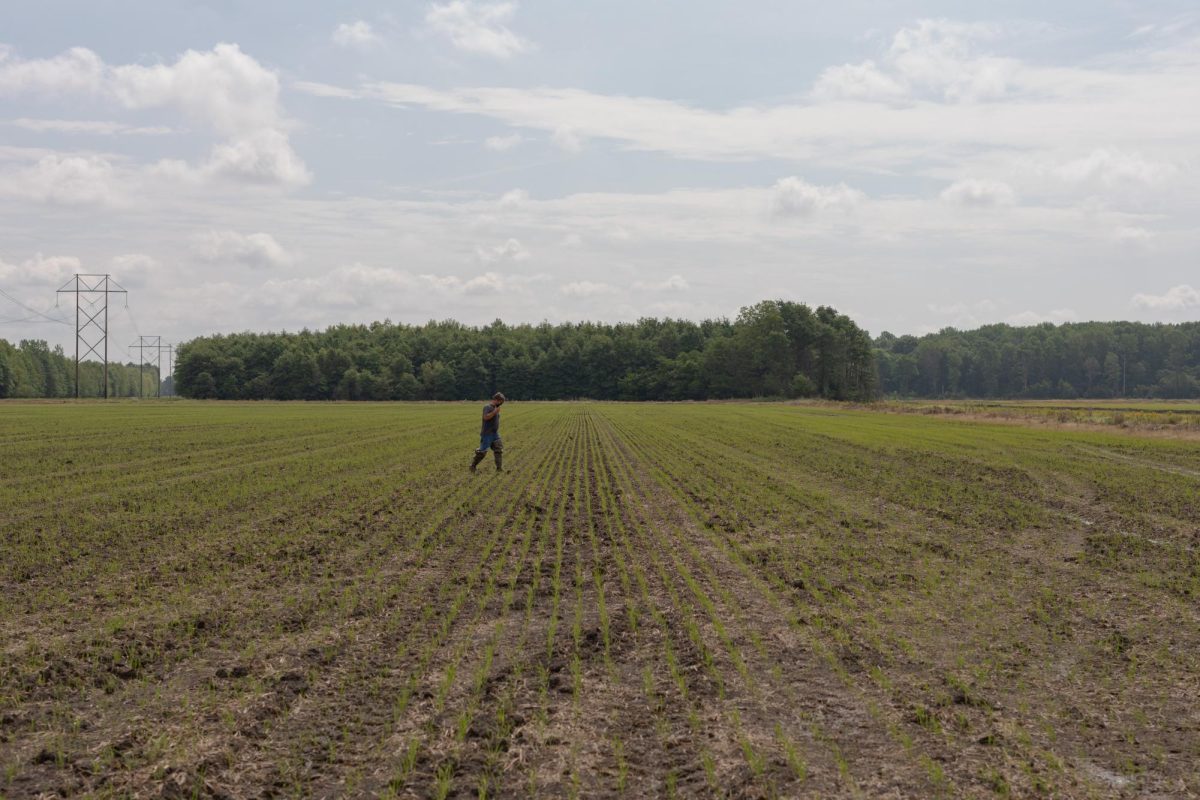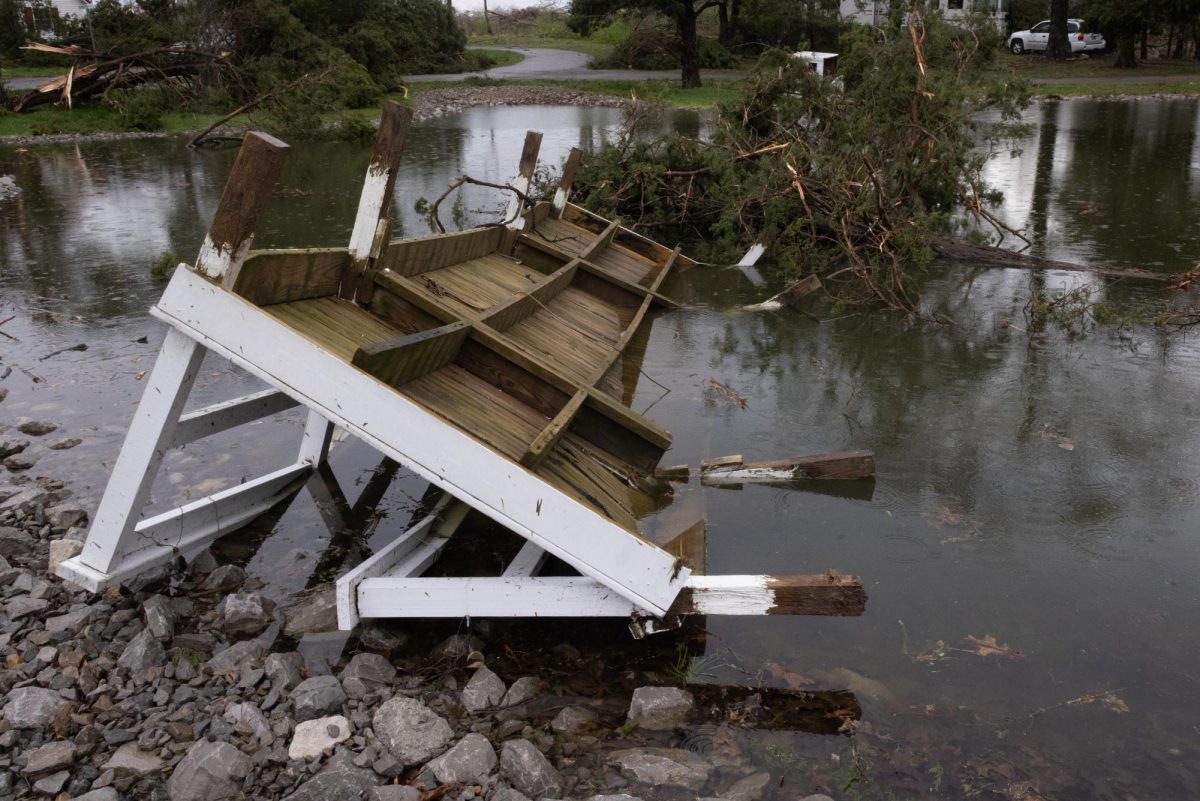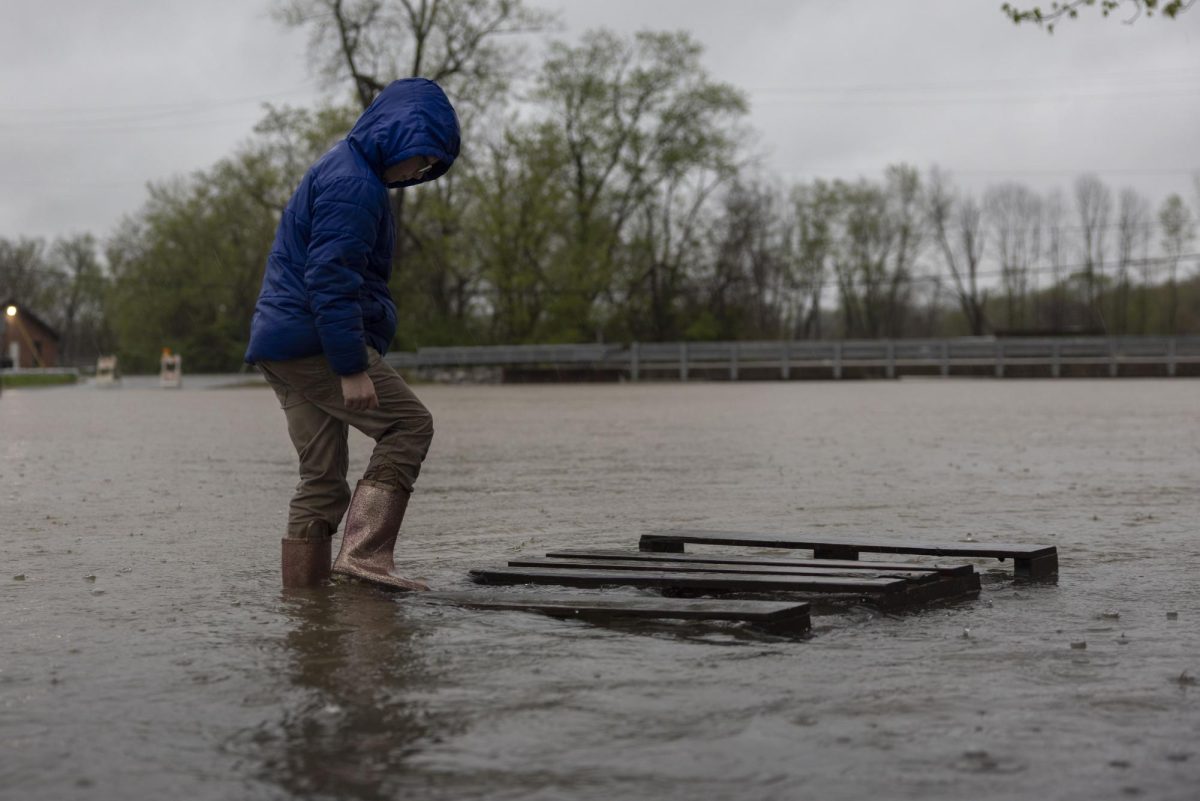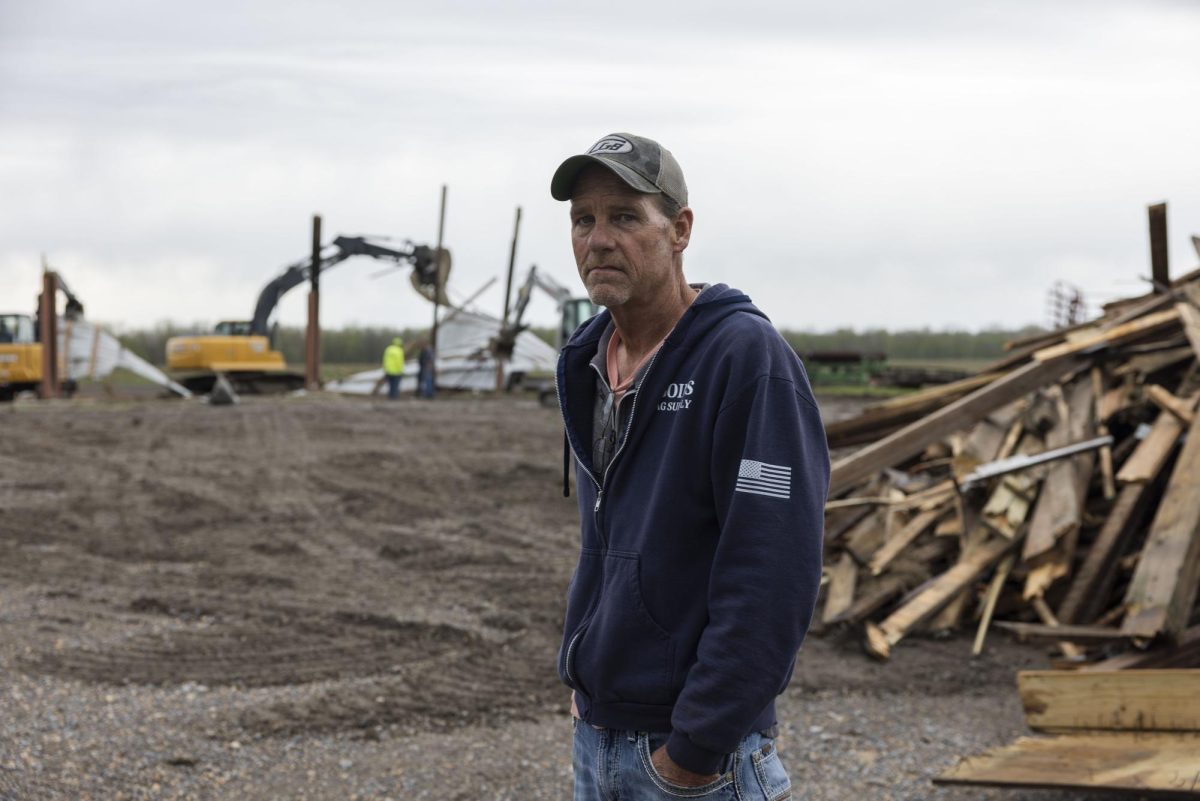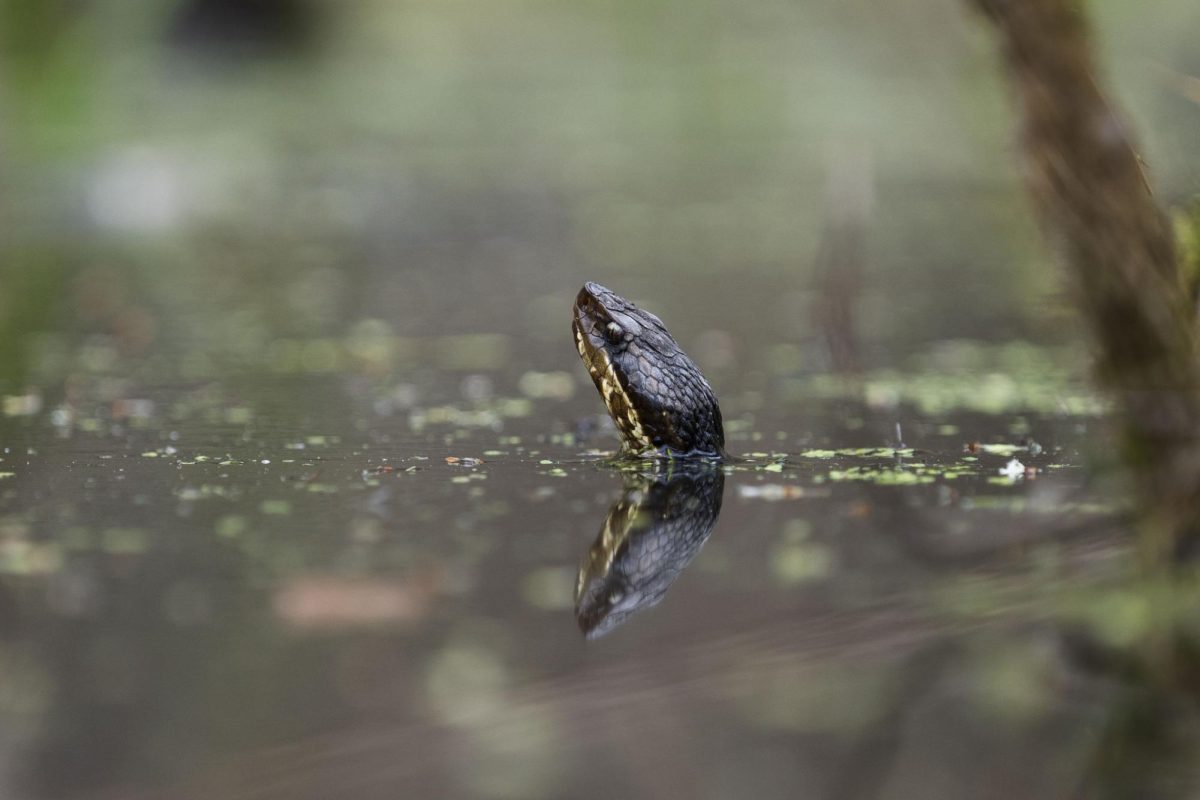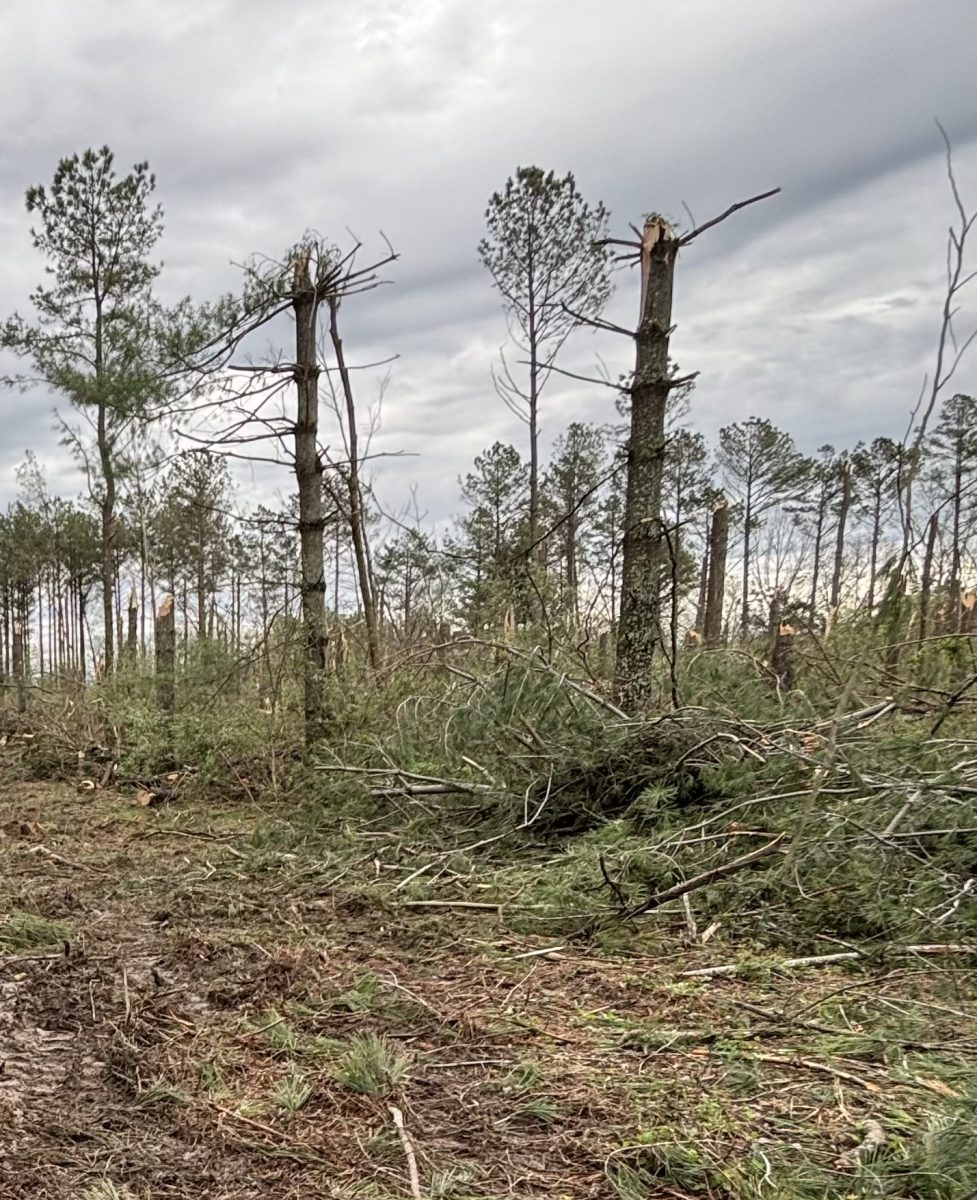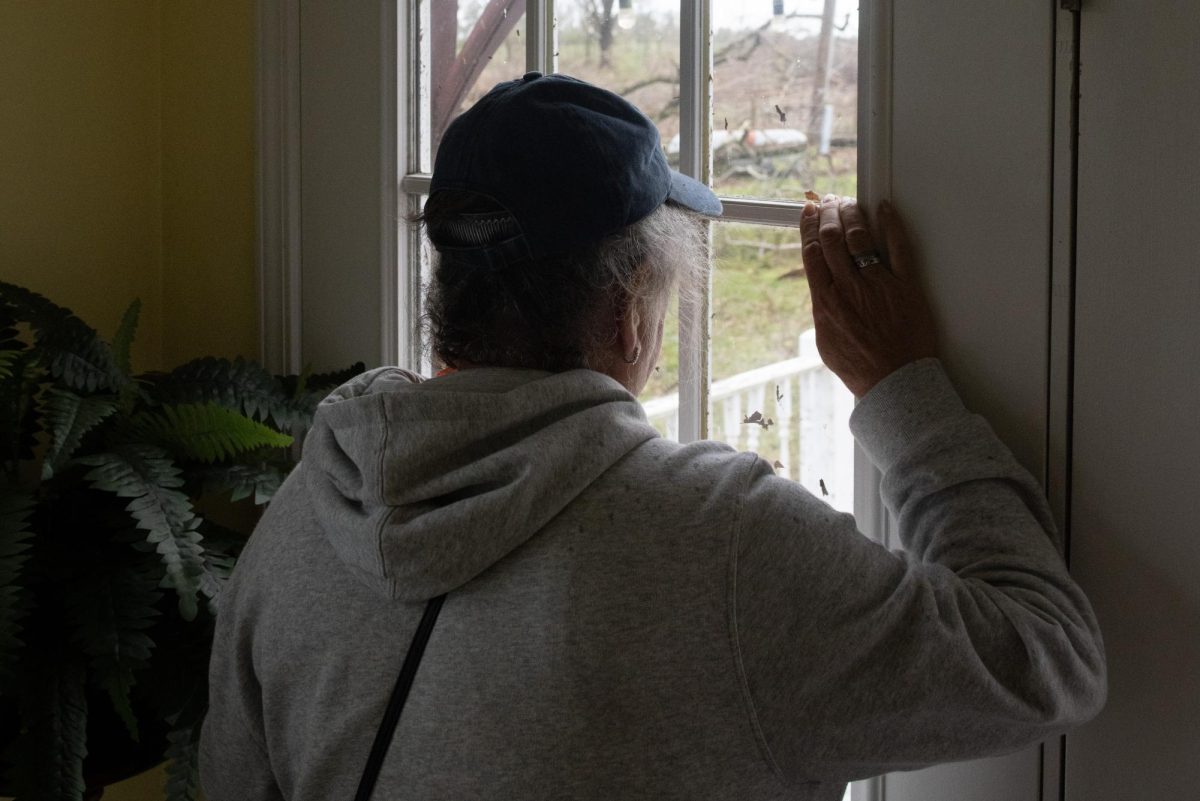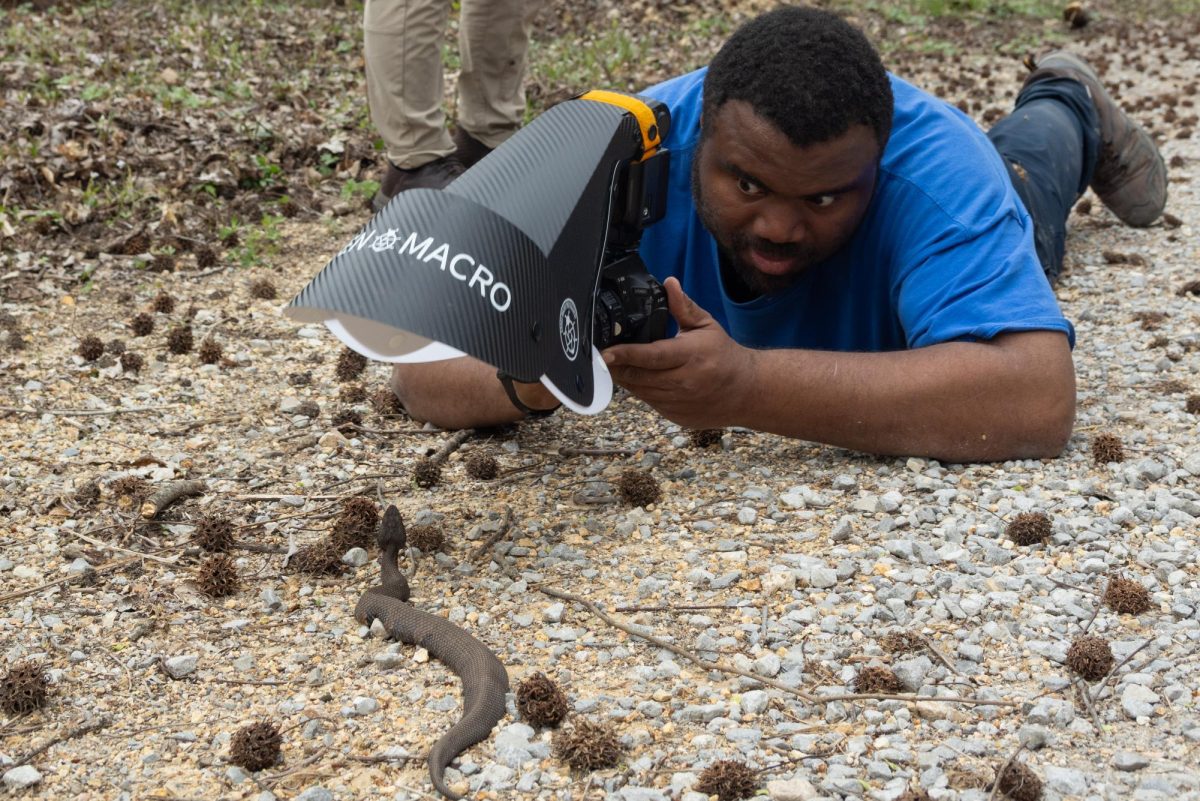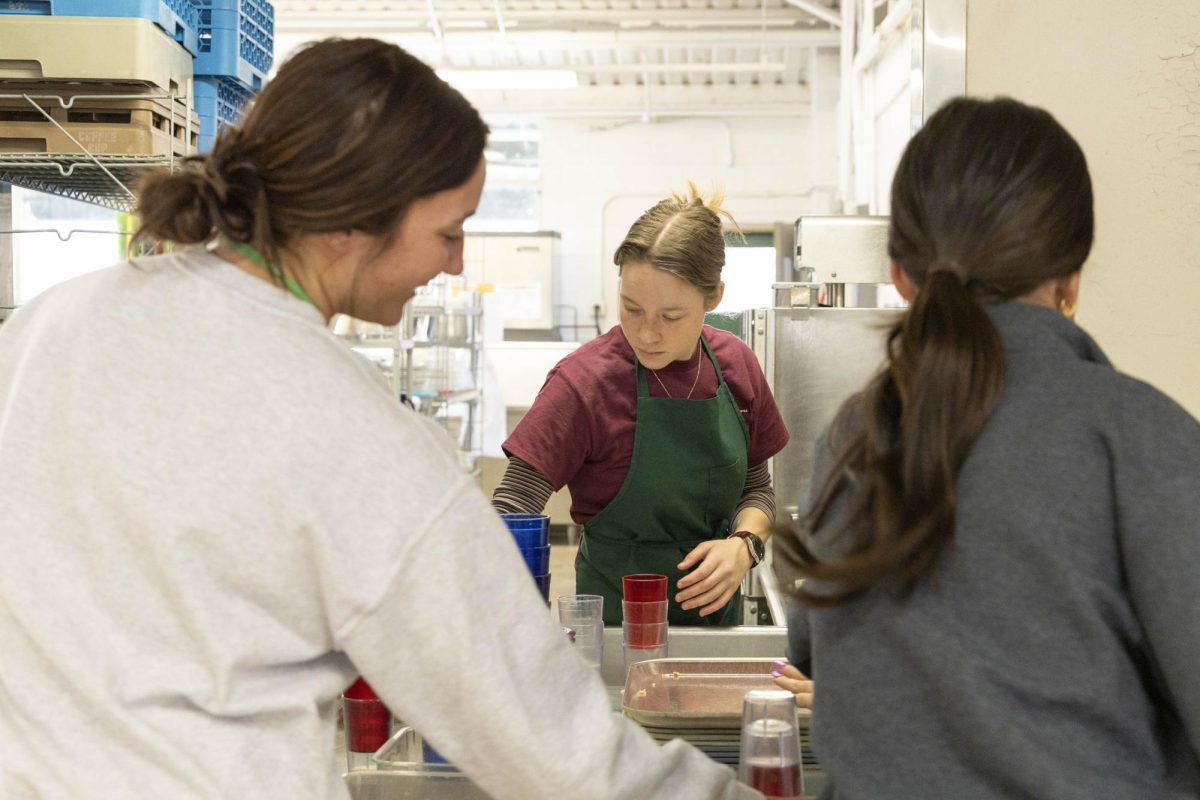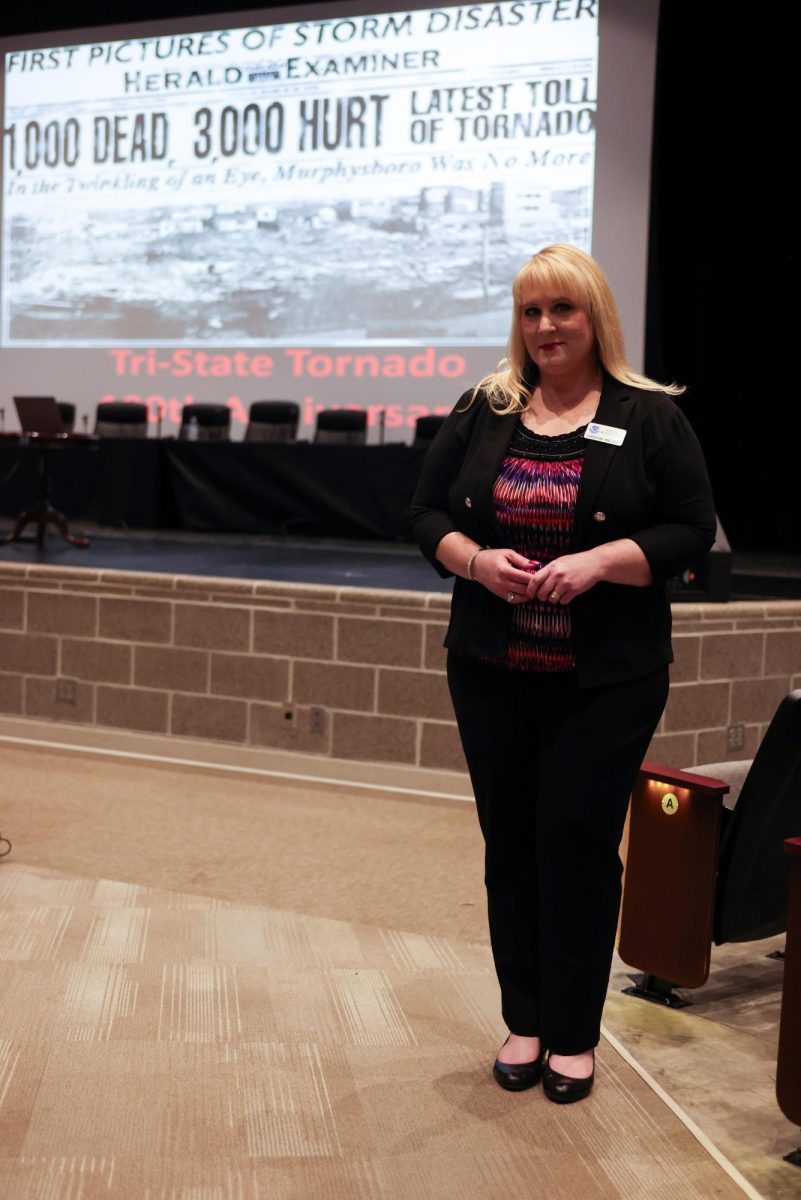Editor’s Note: This story was produced in partnership with the Pulitzer Center and the Saluki Local Reporting Lab
Advertisement
Tufted fields of a golden crop stretch miles long near the mighty Mississippi River in southernmost Illinois. It’s an early September morning and the start of the day waits only on the morning dew to dry off the field. Blake Gerard stands at the top of his deep red, dust-covered combine preparing for harvest and realizes he needs a towel from his truck. He calls down to his 23-year-old son Wyatt, who is now his right-hand man. The sun rises further into the sky on a busy morning for the Gerards, a four-generation family that has laid claim to farmland in the river bottoms of southern Illinois.
But the textured, golden crop the Gerards tend to is not wheat, which is bountiful through Illinois, but rather rice, his brand of rice — and there’s 2,000 acres of it.
“People said you can’t grow rice here,” Blake Gerard said. “I had the crop growing in the field and they’re like ‘you can’t grow rice, we’re in Illinois, they grow rice in Louisiana.’”
It didn’t start with water-based agriculture. The Gerard family began with wheat, alfalfa, corn and other row crops in the 1940s when Blake’s grandfather Harold Gerard made his move from a small island in Cairo to the small village of McClure. Blake’s father, Harold Lynn Gerard, continued on with the row crops until it evolved to soybeans.
Advertisement*
It wasn’t until 1997 after flood waters once again rushed through the McClure area that Gerard knew he couldn’t keep withstanding the water. Times were changing and he needed to as well if he wanted the family’s operation to survive the unpredictable Mississippi and the warmer, wetter climate. So, in 1999, he turned to experimentation and planted his first rice crop of only 40 acres – adding the title of one of the nation’s northernmost rice producers to his resume.
“You know, ‘93, ‘95, ’97 we had floods, and I’m like, I could grow something that’ll grow in water,” Blake Gerard said.
Now, he is owner of Cahokia Rice, a low-glycemic, high-protein strand.
Grown worldwide, rice is a primary staple in half the world’s diet. In the United States, six primary states lead the way in production that accounts to 2% globally according to the USDA. The USDA doesn’t list Illinois as a production state – it isn’t known as home to a suitable climate for efficient rice growth – however Gerard is pioneering the way for northern rice.
“There’s only six right states but really there’s like eight or nine,” Blake Gerard said. “There’s Florida. You got your six, you know, California, Arkansas, Texas, Mississippi, Louisiana and Missouri, but then you also have Illinois, Tennessee, Florida, a little bit in Oklahoma.”
Early April commenced the planting of Blake Gerard’s 26th rice crop – and as the year progressed, it looked to be a more successful one.
“It’s definitely better than average, and it was just a good growing season for it, it was warm,” Blake Gerard said.” We didn’t have cold weather, much cold weather.”
He has a general unspoken principle: Plant anytime in April, whether it be the first of the month or the tail end, and the early, green rice will sprout from the soil around May 5. This year was different. The acres filled with sprouts around April 20 and never slowed down – putting him two to three weeks ahead. A mix of Wyatt’s help and a gentle spring helped the season run smoothly.
Farmers far and few between are Wyatt’s age, and Blake Gerard said he believes it’s now or never to get started.
Blake Gerard was in his early 20s when he left school at Mississippi State in 1990 to take helm of the Gerard family farm following his father’s death. Wyatt, now a similar age, made the decision to leave the University of Missouri to follow in his father’s footsteps.
The choice was an easy one. The routine of 12-hour days spent in the classrooms of Mizzou grew long and Wyatt grew restless. His time spent at the university was far longer than he wished. He thought to himself ‘why spend half the day indoors when he could be spending the same amount of time outside?’ He left for the summer to find new scenes outside of the river’s flatlands and Alaska became his home until his return in the middle of August.
Now, he’s shaping up to be the next Gerard generation to reap the wet and muddy river soil of McClure. Wyatt is learning all the ins and outs from his dad, a yearlong process that never really stalls.
Wyatt jumped right into the mix upon his return home. Harvest was around the corner and Blake needed the extra hands. Blake spent long days in the driver’s seat of the combine in the spring, row by row, laying seeds down into the soil. He spent days alone in the warm summer scouting fields and pumping water. Wyatt now sits in the same combine seat, reaping the crop his father planted months prior. Blake is much more at ease knowing the responsibilities fall between the two of them.
With 30 years of experience, Blake Gerard is just good at rice, and when you’re that good, Wyatt sees no reason why one would ever want to quit, he said.
“I don’t think he’ll ever retire,” Wyatt Gerard said. “I think he’ll like die like putting in a levee gate.”
Four generations of the Gerards have farmed in the changing landscape of Illinois agriculture, growing with the climate. Blake has increased his rice acreage exponentially from his original 40 acres, and he said he believes by the time Wyatt is his age, Cahokia Rice would be producing three times its current amount.
So, Blake stands over Wyatt’s shoulders and gives him directions – a learning process for if he so chooses to fill his fathers shoes down the line.
“I’m just trying to learn all I can from him,” Wyatt Gerard said.
Editor-in-chief Lylee Gibbs can be reached at lgibbs@dailyegyptian.com or @lyleegibbsphoto on instagram. To stay up to date on all your southern Illinois news, be sure to follow The Daily Egyptian on Facebook and on X @dailyegyptian.
Advertisement



